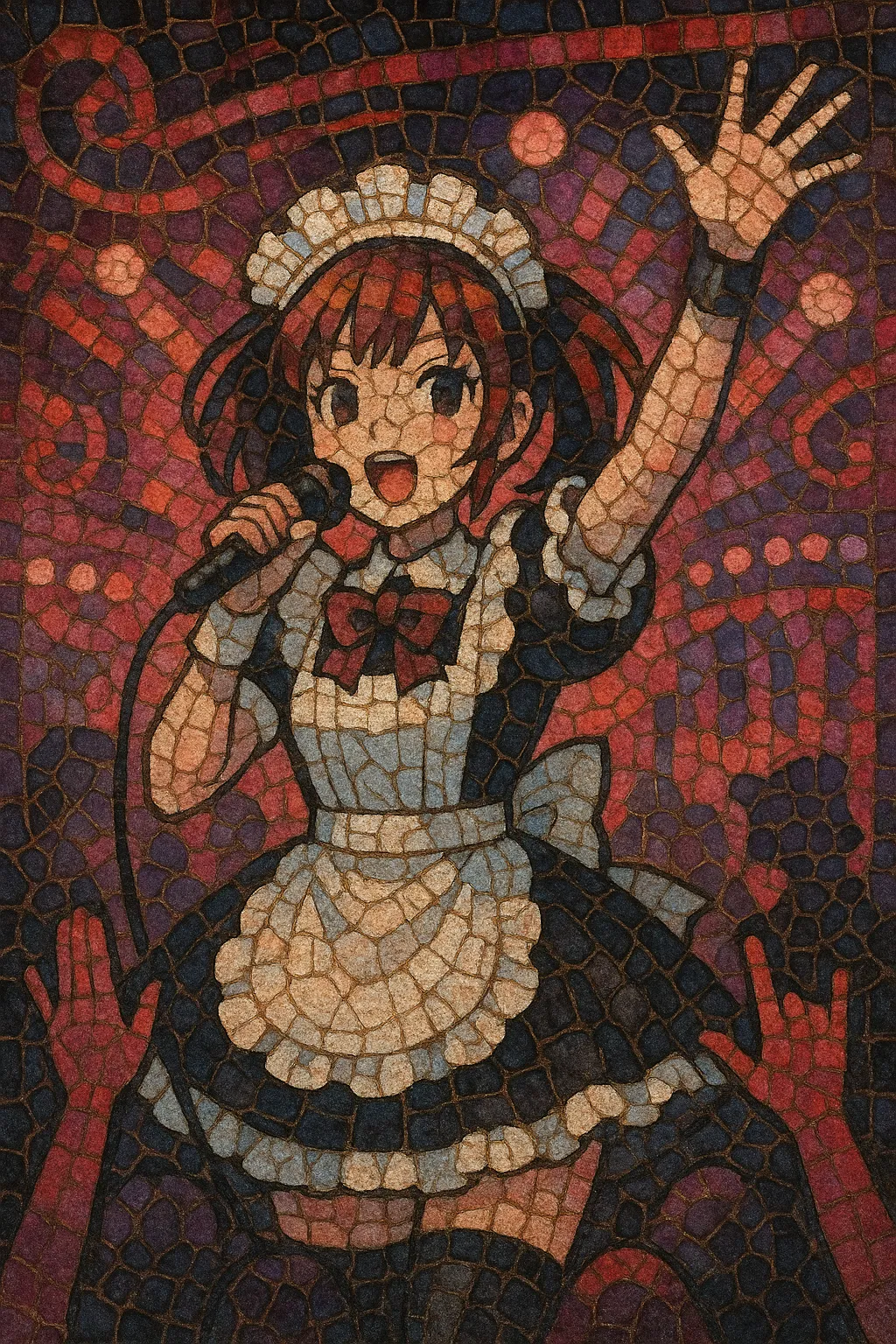Maidcore is a Japanese microgenre and scene tag that blends the "maid café" aesthetic with high-energy pop, rock, and club sounds. It typically pairs cute, high-pitched vocals and moe/otaku call-and-response with either punchy rock instrumentation or glossy electronic production.
Musically, maidcore draws heavily from denpa and Akihabara-centric idol music, but it often borrows the drive and stagecraft of alt-idol, visual-kei, and even kawaii metal. On stage and in videos, performers embrace maid uniforms, playful service-role banter, and audience-participation rituals that mirror the atmosphere of Tokyo’s maid cafés.
While largely aesthetic-driven, the style coheres through sugar-rush melodies, chantable hooks, and theatrical performance that makes shows feel like a cross between a livehouse rock set and a themed pop event.
Maid cafés emerged in Akihabara, Tokyo, in the early 2000s, alongside the growth of otaku culture and denpa/akiba-pop. Café stages and in-store events nurtured performers who mixed cute, service-themed MCs with upbeat pop numbers and call-and-response chants.
By the 2010s, the look and performance language of maid cafés began to fuse more deliberately with livehouse rock and alt-idol practices. Acts with maid aesthetics or café affiliations incorporated heavier bands or high-powered EDM arrangements. Online platforms amplified the aesthetic, encouraging the term “maidcore” to describe music and performances uniting moe vocals, maid uniforms, and energetic rock/club backing.
Groups tied to Akihabara stages and maid café brands released original songs, while rock-forward maid-themed acts broadened the audience beyond cafés. This cross-pollination with visual-kei presentation, denpa songwriting, and (in some cases) kawaii metal’s muscular grooves helped maidcore persist as a recognizable—if fluid—microgenre.
Today, maidcore remains a niche but vivid lane where café-rooted performers, denpa vocalists, and rock/EDM producers collaborate. The scene thrives on live immersion, audience calls, and a playful blurring of service-role theater with high-octane pop and rock.


